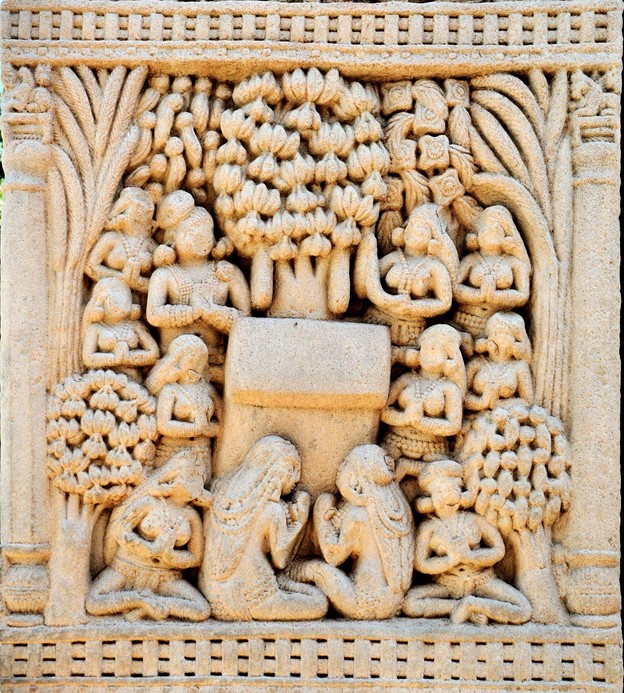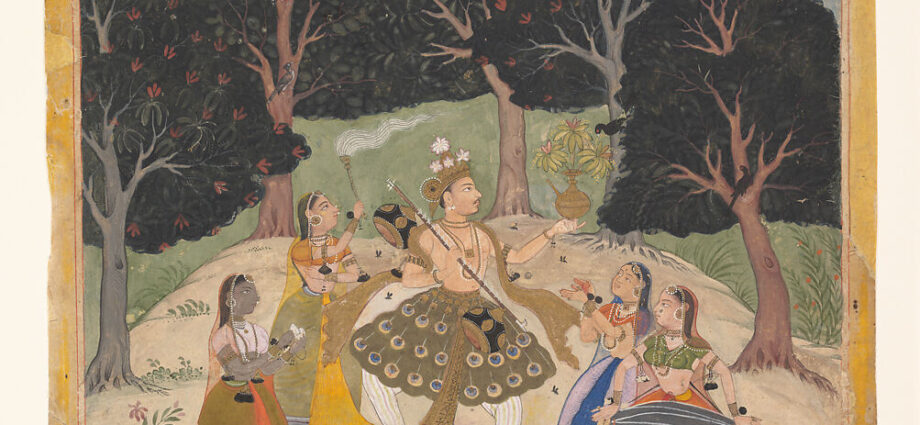A few days back, the Mughal Garden in Rashtrapati Bhawan was renamed Amrit Udyan. While it sent some into deep throbbing orgasm, seculars went into a tailspin of depression, ruing the destruction of the history of their beloved Mughals. Nothing pains them more than the aspersions on invaders from Uzbekistan.
Their main contention was that it was the Mughals who had to bring gardens, specifically char-baghs, to India as mool-nivasis were congenitally incapable of building even a manicured garden. Mughals, a cross between Mongols and Turks, were enamoured of Persian high culture, and it remained a cherished KPI of every sultan worth his salt to replicate Persia in India. In that sense, it was the Yellow men’s burden for them to civilise uncouth Indians. Seculars totally believe in this dictum.
The char-baghs were not created ex nihilo and the genesis of such gardens originated in Persia in the Pre-Islamic period. However, even then, it was nothing extraordinary as it had a standard mundane design of two pathways or canals cutting a garden into four pieces, hence the name char-baghs. If a garden in four parts can be appreciated so much, we at Harappa conceptualised the entire city on a grid plan around 7000 years ago.
In Pasargadae, Persia, the palace of Cyrus the Great (559–530 BCE) had such a royal garden that was divided cross-axially by intersecting watercourses. The viewing balcony was positioned in the center of a wall, giving the royals an expansive view. The founders of Islam took an instant liking to such a design and adopted it as it is, and even documented it in their holy book. The rough and tumble of desert life of Arabia made them long for water, trees and attendant coolness, and they visualised them as important components of zannat. Even then, these gardens were meant as elite private spaces in the Islamic scheme of things and hoi polloi were shunned, as usual. These were also the places where aristocratic swordsmen of Islam were likely to relax and retreat after cold-hearted carnage.
As Islam’s juggernaut continued all over Asia and Africa in the medieval era, the invaders created these gardens in the captured territories as a stamp of their political and military authority. In Delhi, Agra, Kashmir and Agra, the Mughals built many char-baghs that survive in their pristine beauty. However, in other Islamic countries, they barely exist today. Why is it so? Probably because of our governments which see to it that no such monuments or gardens or any other vestiges of foreign imperialism rot in a secular firmament of India that is Bharat. In contrast, ancient Hindu temples continue to decay and exist in dilapidated conditions as they were five centuries ago. There is not even a thought of repairing them, mostly under the pretext of persevering the history. Kashmir’s Sun temple is a prime example. There are thousands of other examples littering the landscape of India too.
The concept of Char-bagh was first implemented not in Persia, not in Central Asia, nor in Arabia but in India, that too on a monumental scale, when Humayun’s Tomb in Delhi was built in 1558. Indians had money, architectural skills and project management techniques as for the past one and half thousand years, they have been making colossal temples, not only in India but in South East Asia too. In Persia, such a bagh was constructed half a century later, between 1598 and 1629, at its birthplace at Naghsh-i Jahan, the charbagh Royal Maidan in Isfahan. However, on a much smaller scale, Babur did build one in Kabul in 1528, then in Dholpur in Rajasthan too.
However, the construction of such char-baghs was given an entirely different spin in Nehruvian history and made it look as if Hindus were living homeless and clothless in a desert and hadn’t seen a tree in their entire life, discarding the common fact that India was once full of jungles. Every Hindu sacred text mentions the beauty of gardens and forests, like the Kama Sutra, the Mahabharata, the Rigveda, or the Ramayana. The historians quietly forgot about the van-upvan of Vrindavan where Krishna played with gopis. Many of the gardens, natural as well as man-made, were used for celebrating numerous festivals like Holi, vasantotsava, Deepawali etc. The four styles of ancient Hindu gardens were udyan, paramadodvana, vrikshavatika, and nandanavana. Udyan were gardens where kings could play chess and be entertained by dancers and comedians. The parks of Paramadodvana were designated for royal couples to enjoy. Vrikshavatika were created by royalty for the use of high-ranking courtiers within the kingdom. And there were gardens dedicated explicitly to Krishna. Margeshu vriksha was the practise of planting trees on the side of the road to provide shade.

According to Buddhist accounts, King Bimbisara gave Buddha a whole bamboo grove. The Digha Nikaya, a Buddhist text, also mentions Buddha staying in the Jivaka monastery’s mango orchard, which was given to him by the physician Jivaka. According to Lalit Vistara, Vaishali was a prosperous and populous town full of parks and gardens during Buddha’s time. Inscriptions by Ashoka mention the establishment of botanical gardens for planting medicinal herbs, plants, and trees. They had pools of water, were laid out in grid patterns, and were usually accompanied by chattri pavilions.
The Kama Sutra mentions details on house gardens and how to plant vegetables, bunches of sugarcane, various scented flowers like jasmine, rose, etc. be planted and seats and arbours should be made and the middle of the garden should have a well, a tank or a pond. Several other treatises mention the construction of lotus-shaped baths and seats, lakes, swings, roundabouts, and Menageries. Chinese traveller Xuanzang mentions accounts of Nalanda where “azure pool winds around the monasteries, adorned with the full-blown cups of the blue lotus; the dazzling red flowers of the lovely kanaka hang here and there, and outside groves of mango trees offer the inhabitants their dense and protective shade.”
Like everything else, Hindus even wrote several texts for building gardens. Poets like Kalidasa even described the lovers’ rendezvous in a secluded garden erotically. According to the 16th-century Hindu text Shilparatna, pushpavatika should be located in the northern part of town. A garden should be elaborately laid out with tanks, creeper arbours, Kridasaila, mock hills, swings, raised seats, or vedika under a large shady tree, according to Kalidasa. In painting and sculptures, women were named as Salabhanjika who plucked sala flowers and spent time in merry-making. Arthashastra, Sukraniti, and Kamandakanti mention public gardens located outside of town and provided by the government where people would go and spend the whole day in a picnic. Upavan Vinoda’s chapter in the 14th-century encyclopaedia Sharngadhara-paddhati was dedicated to horticulture and gardening.
In Sri Lanka, a part of Greater India in ancient times, a garden with quadrilateral mandala plan was discovered at Sigiriya, which might be the original char-bagh.
Moreover, Hindus and people of allied religions always took pleasure in natural forests, mountains, rivers and caves. Most of the monasteries and temples were constructed near rivers, oceans, valleys or even at the top of mountains. In a Hindu hierarchy, natural wilderness always trumps man-made landscapes.
Wild, anarchy, and disorder are always appreciated and cherished in Hindu scheme of things and there has always been an eternal tussle between order and chaos. That is the beauty of Hinduism and that is why it survived a millennium of invasions.
Written by Amit Agarwal, author of the bestsellers on Indian history titled “Swift Horses
Sharp Swords” and a “Never Ending Conflict”.
Follow me on Twitter @amit1119 and Instagram/ Facebook at amitagarwalauthor.
![]()
- How Hindu rituals spawned numerous advancements in science, maths and other arts - March 13, 2024
- Naga Sadhus and their fighting skills - February 20, 2024
- Lessons for India from the Israel-Palestine conflict - October 12, 2023

